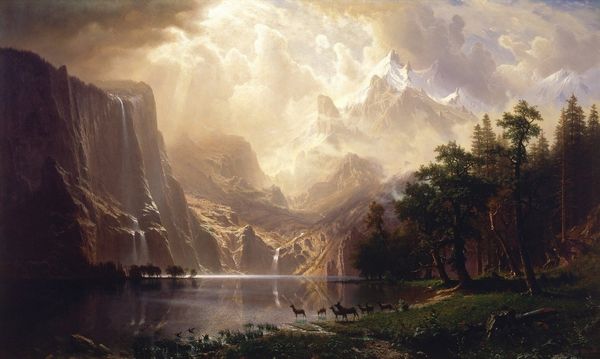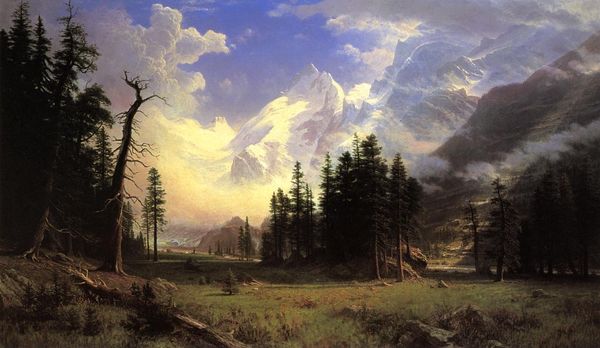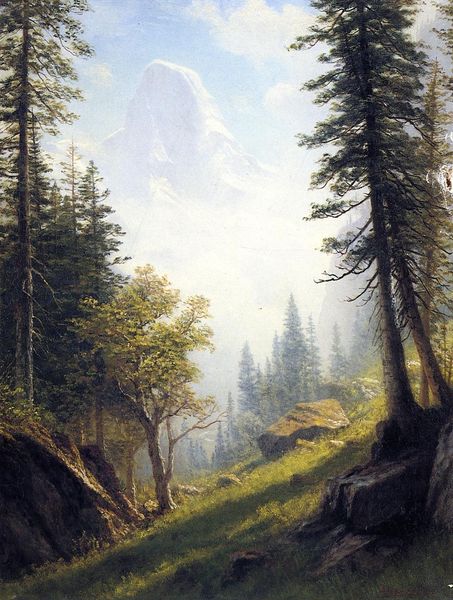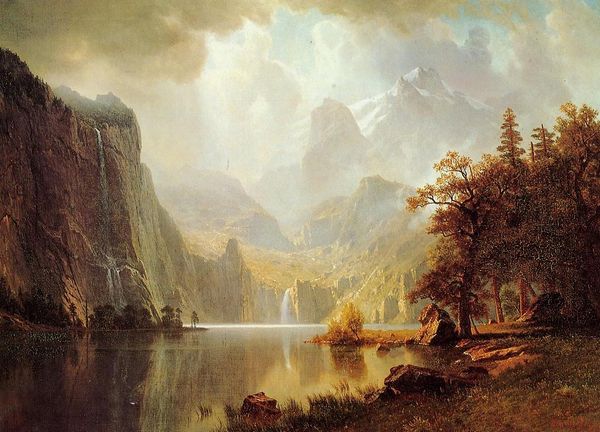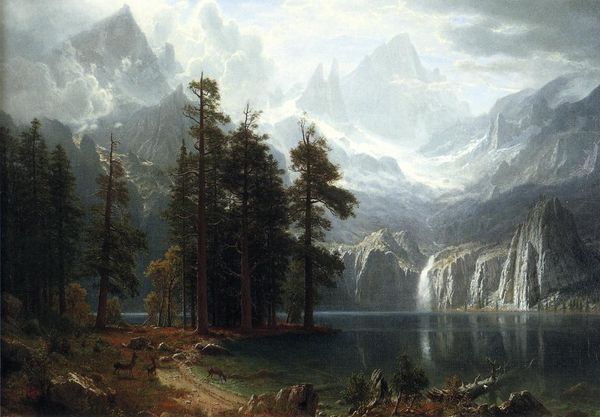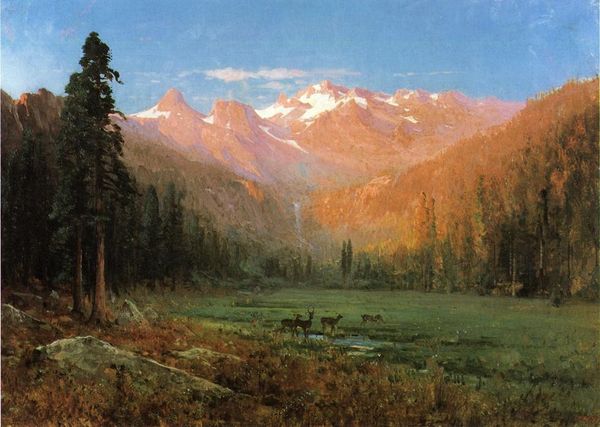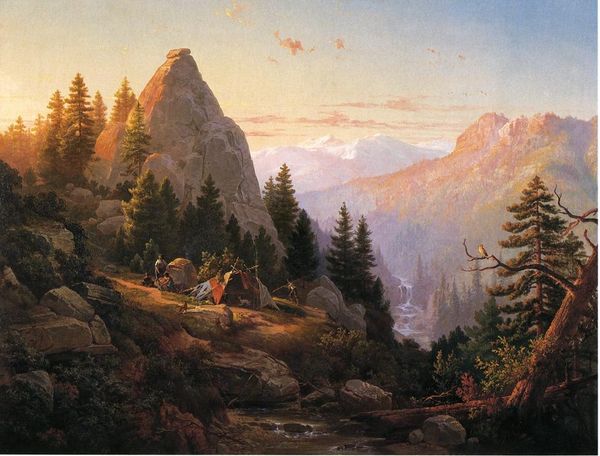
Copyright: Public domain
Thomas Moran painted this sublime landscape, "Three Tetons," using oil on canvas. His technique follows the academic tradition, built up through layers of paint. However, rather than focus on the realism he achieves, consider the materials themselves. Canvas and oil paint were mass-produced, commercially available materials, made possible by industrialization. This meant that artists like Moran could focus on developing their personal style, rather than being preoccupied with laborious tasks like grinding pigments. The very qualities of this painting are intimately linked to its moment of production. The smooth surface of the canvas allows for a seamless blending of tones, while the richness of the oil paints creates a vibrant and captivating scene. But perhaps the most crucial material is the brush, which allows Moran to evoke the textures of nature with surprising accuracy, as well as the speed and efficiency to paint this scene, likely "en plein air." Paying attention to materials and making allows us to appreciate the complex relationship between art, labor, and the social contexts in which they are created.
Comments
No comments
Be the first to comment and join the conversation on the ultimate creative platform.

